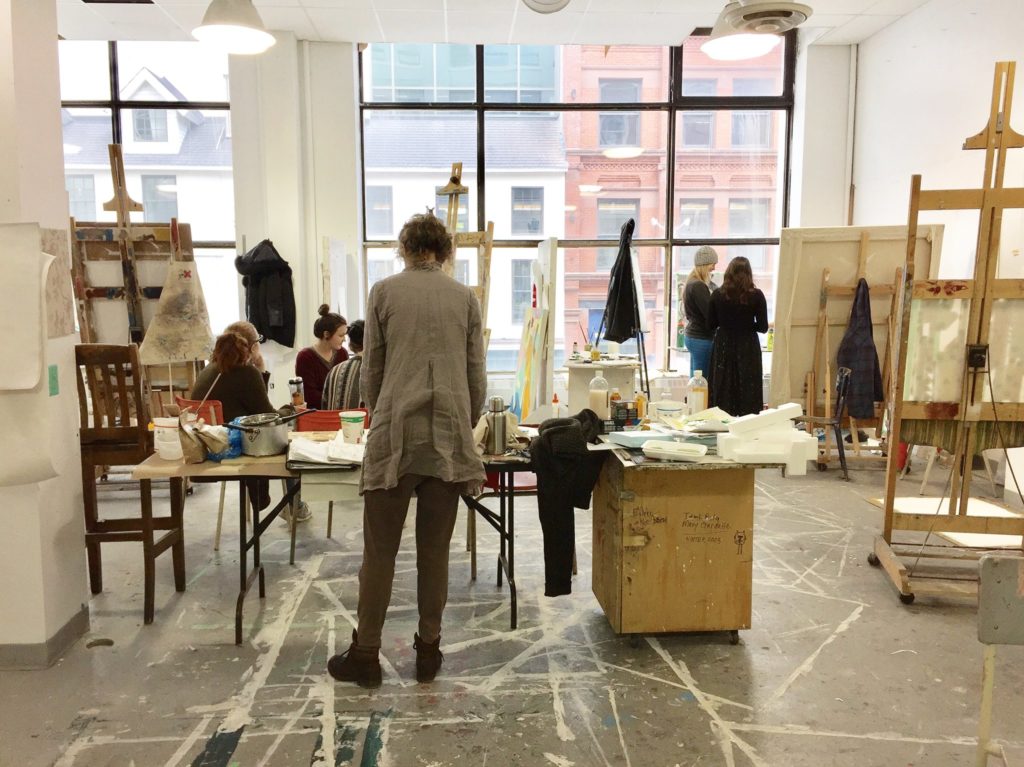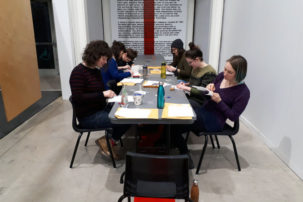Faculty at NSCAD University have voted in favour of a strike mandate.
The fact that 97.5% of faculty union members voted to strike was released this week. Given Nova Scotia labour legislation and contract terms around cooling-off periods, the earliest a strike could begin is mid-February.
NSCAD faculty and staff have been without a contract since July 1, 2018. They are pushing for compensation and workload more in line with that of their peers at other Nova Scotia universities, among other issues.
“In every other university in the province, instructors and faculty teach less than we do,” says Mathew Reichertz, president of the Faculty Union of NSCAD (FUNSCAD), speaking to workload issues. “The reason why this is important is because research has become such an emphasis in terms of faculty job expectations….. Why is it that artists and craftspeople and designers who are university professors have to teach more than faculty from other disciplines?”
“Some of our part-time faculty, essentially our contract academic staff, have been teaching at NSCAD for 30 years…. And yet they don’t know if they will be teaching next semester until 6 weeks before classes start, or less.”
Last year, after several seasons of financial stress, NSCAD University posted a $3.1 million surplus. Now, faculty and staff who held off previously on full cost-of-living pay raises to help make the institution more financially viable, want to see some of those sacrifices adjusted. Union representatives say they are also concerned about making progress on job security and caregiver leave.
“Some of our part-time faculty, essentially our contract academic staff, have been teaching at NSCAD for 30 years, and many have been teaching at NSCAD for over 20 years,” Reichertz says. “And yet they don’t know if they will be teaching the next semester until 6 weeks before classes start, or less.”
Student union representatives from NSCAD say they support the faculty union in its negotiations with the university—and its desire to push forward better working conditions for teachers and staff.
“If the process does result in a strike, we will really encourage students to stand in solidarity with FUNSCAD,” says Isa Wright, VP Academic at the university’s student union (SUNSCAD). “We know that better working conditions for our faculty mean better learning conditions for students.”
“Why is it that artists and craftspeople and designers who are university professors have to teach more than faculty from other disciplines?”
As a 2018 study and recent book have indicated, precarity in the lives of art-school faculty and staff is a reality at many institutions across Canada. “We know it’s best for students here and across the country” to be advocating for better working conditions, says Wright.
The road ahead may be complicated by multiple factors. Current NSCAD University president Dianne Taylor Gearing announced last year that she is leaving to return to the UK when her five-year term is completed in summer 2019; no successor has yet been named. NSCAD University has also been engaged in discussions to move to a joint waterfront campus with the Art Gallery of Nova Scotia in future. And the recent past includes staff layoffs, student protests, and an attempt to roll NSCAD into another area university.
Tuition fee increases also remain a concern at NSCAD. “At NSCAD we have had our tuition go up by a very significant amount even since I started three years ago,” says Wright, who is pursuing a printmaking specialization. A brief comparison indicates that it may have the most expensive domestic tuition of Canada’s four arts universities. For the maximum Canadian-resident courseload (including fees) at NSCAD, the fee is listed at $5,820 per semester; at OCAD University, it’s $4,590 per semester; at Emily Carr University of Art and Design, it’s approximately $3,480 per semester; and at Alberta University of the Arts, it’s approximately $3,380 per semester.
Today, FUNSCAD entered into its final day of scheduled conciliation proceedings with the university, though conversations may continue if both parties desire it. NSCAD University administration was contacted repeatedly for comment on the strike vote and related labour issues, but none was received by press time.
Clarifications were made to this article on February 5, 2019. The original article compared tuition and fee amounts at different Canadian art schools, but due to differences in credit tallying, did not always make clear that those assessments were based on maximum credit load. The updated article offers maxiumum (typically 18-credit) Canadian-resident tuition and fee amounts for all schools listed for a fairer comparison. In both the original and updated calculations, NSCAD had the most expensive domestic tuition and fee package, followed by OCAD University, ECUAD and ACAD/Alberta University of the Arts.

 Inside a painting studio at NSCAD University. Photo: Facebook.
Inside a painting studio at NSCAD University. Photo: Facebook.






